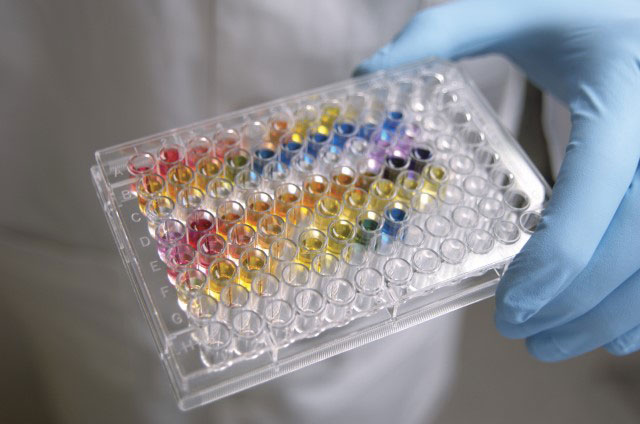 APHL is working with CDC and partners in clinical and public health laboratories to maintain effective enteric disease surveillance systems as culture-independent diagnostics (CID) and other new testing technologies advance.
APHL is working with CDC and partners in clinical and public health laboratories to maintain effective enteric disease surveillance systems as culture-independent diagnostics (CID) and other new testing technologies advance.
What is culture-independent diagnostics?
Advances in technology are making clinical diagnosis and patient management of foodborne illnesses more rapid than ever before. In April 2012, APHL co-organized an international
Forum on culture independent diagnostic tests (CIDTs) in Atlanta, GA to discuss these emerging issues. Over 100 subject matter experts from state and federal agencies, academia, clinical medicine and the laboratory test device industry participated in the two-day meeting.
How does culture-independent testing affect public health surveillance?
These new diagnostic tests eliminate the need to culture organisms for the diagnosis of patient illnesses. While this is highly beneficial to patient care, surveillance systems such as
PulseNet, which utilize isolates as the basis of their national and international surveillance programs, will no longer be able to detect foodborne outbreaks in the population. APHL and CDC are monitoring the expansion of culture independent diagnostics into clinical and public health laboratories. A 2015
CDC report describes the uptake of CIDTs in clinical laboratories through the Foodborne Diseases Active Surveillance Network (FoodNet). For longer term solutions,
CDC has undertaken applied research to adapt our surveillance systems for foodborne pathogens to accommodate changes resulting from increased use of these new culture independent diagnostic tests.
What is APHL doing to assist public health labs to adopt culture-independent methods?
APHL, CDC and many other stakeholders are participating in a number of working groups to address the regulatory, surveillance, and technological issues associated with culture independent diagnostics test implementation within clinical and public health laboratories. These working groups include the APHL
CID Subcommittee (requires APHLWeb login),
CDC Regulatory Workgroup and
CDC CID Planning Workgroup. APHL recently published a
Fact Sheet describing the use of CIDTs and their impact on isolate-based surveillance programs like PulseNet.
Who is developing culture-independent tests?
Companies are developing new diagnostic panels for the clinical laboratory community that will enable microbiologists to rapidly identify pathogens using newer molecular methods. APHL is collaborating with its sustaining members and other manufacturers to ensure that these new technologies meet the needs of public health, clinical and reference laboratories.
Resources
APHL Webinar Series
The Updated Scoop on Poop-Culture Independent Detection Tests (login required)
APHL Position Statements
Legal Requirements for Enteric Disease Isolates, February 2015
Use of Non-Culture Assays to Detect Foodborne Infectious Agents, February 2012
CIFOR Law Project Tools, September 2012
Publications
State Legal Requirements for Submission of Isolates and Other Clinical Materials from Clinical Laboratories: A Review of State Approaches, February 2016
Interim Guidelines for Submission of Enteric Pathogens from Positive Culture-Independent Diagnostic Test Specimens to Public Health, February 2016
Bacterial Enteric Infections Detected by Culture-Independent Diagnostic Tests-FoodNet, United States, 2012-2014
APHL CIDT Factsheet, February 2015
Effect of Culture-Independent Diagnostic Tests on Future Emerging Infections Program Surveillance